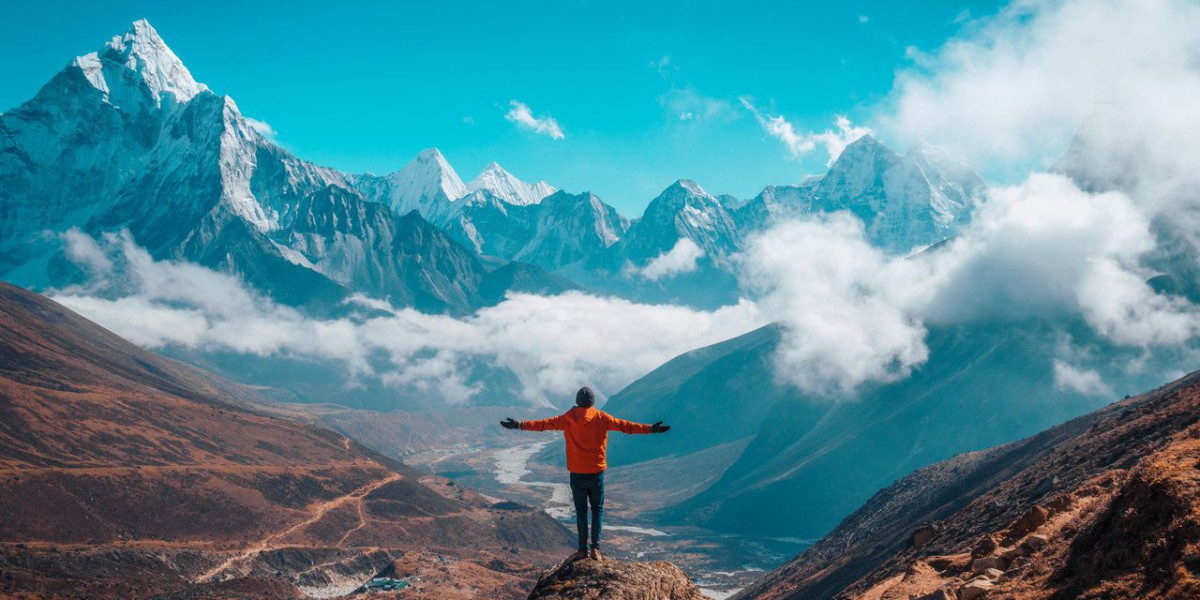The Everest Base Camp trek is a dream adventure for many outdoor enthusiasts and thrill-seekers. Nestled in the heart of the Himalayas, this trek offers breathtaking views, a chance to experience the Sherpa culture, and the opportunity to stand in the shadow of the world's highest peak, Mount Everest. However, planning this epic journey requires careful preparation and consideration. In this article, we'll guide you through the essential steps to help you plan your Everest Base Camp trek effectively.
1. Research and Choose the Right Time
The first step in planning your Everest Base Camp trek is to determine the best time to go. The ideal trekking seasons are spring (March to May) and autumn (September to November). During these periods, you'll enjoy pleasant weather, clear skies, and relatively stable conditions. Avoid the monsoon season (June to August) and the harsh winter months (December to February) when trekking becomes challenging due to heavy rainfall or snow.
2. Obtain Necessary Permits
Trekking in the Everest region requires permits. You'll need two permits: the Sagarmatha National Park Permit and the TIMS (Trekkers' Information Management System) Card. These permits help support conservation efforts and ensure your safety during the trek. You can obtain these permits through a registered trekking agency in Kathmandu or at the entrance of the national park in Monjo.
3. Plan Your Itinerary
A well-planned itinerary is crucial for a successful Everest Base Camp trek. Typical itineraries range from 12 to 16 days. You'll need time to acclimatize to the high altitude, so plan rest days at key locations like Namche Bazaar and Dingboche. Be flexible with your schedule in case of adverse weather or altitude-related issues.
Here's a sample itinerary:
- Day 1: Fly from Kathmandu to Lukla, trek to Phakding.
- Day 2: Trek from Phakding to Namche Bazaar.
- Day 3: Acclimatization day in Namche Bazaar.
- Day 4: Trek from Namche Bazaar to Tengboche.
- Day 5: Trek from Tengboche to Dingboche.
- Day 6: Acclimatization day in Dingboche.
- Day 7: Trek from Dingboche to Lobuche.
- Day 8: Trek from Lobuche to Gorak Shep and visit Everest Base Camp.
- Day 9: Hike to Kala Patthar and descend to Pheriche.
- Day 10: Trek from Pheriche to Namche Bazaar.
- Day 11: Trek from Namche Bazaar to Lukla.
- Day 12: Fly back to Kathmandu.
4. Physical Preparation
Trekking to Everest Base Camp is physically demanding due to the high altitude and challenging terrain. Start a fitness regimen months before your trip, including cardiovascular exercises, strength training, and long hikes. This will help you build endurance and prepare your body for the trek.
5. Packing Essentials
Packing for the Everest Base Camp trek requires careful consideration. Essential items include:
- Warm clothing, including thermal layers and a down jacket.
- Sturdy and comfortable trekking boots.
- A good quality backpack.
- Sleeping bag suitable for cold temperatures.
- Medications for altitude sickness, pain relief, and stomach issues.
- UV protection sunglasses and sunscreen.
- A water purification system or iodine tablets.
- A comprehensive first-aid kit.
- Trekking poles for stability.
6. Choose Accommodations Wisely
Teahouses and lodges are available along the trekking route. They offer basic accommodations and meals. Make reservations in advance during peak trekking seasons, and be prepared for rustic facilities at higher altitudes. Carry some cash as ATMs are scarce on the trail.
7. Hire a Guide and Porter (Optional)
While it's possible to trek independently, hiring a local guide and porter can enhance your experience. A guide can navigate the trail, provide cultural insights, and assist in emergencies. A porter can carry your heavy backpack, allowing you to enjoy the trek without the added weight.
8. Respect Local Culture and Environment
The Everest region is not only stunning but also culturally rich. Respect local customs and traditions, and minimize your environmental impact. Pack out all trash, use refillable water bottles, and follow the "leave no trace" principles.
Conclusion
Trekking to Everest Base Camp is an unforgettable adventure that requires careful planning and preparation. With the right research, permits, itinerary, and gear, you can embark on this epic journey and experience the majesty of the Himalayas while creating memories that will last a lifetime. Remember to prioritize safety, acclimatization, and respect for the environment and local culture to make your Everest Base Camp trek a truly remarkable experience.















